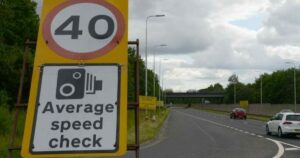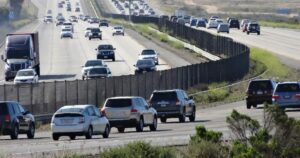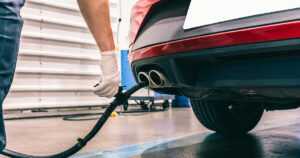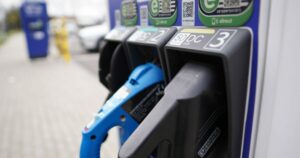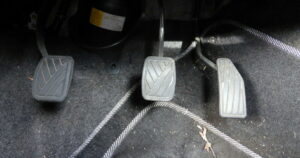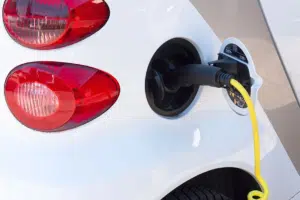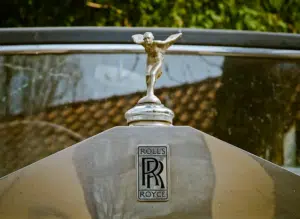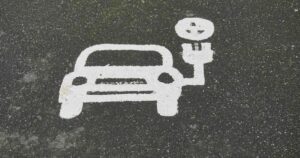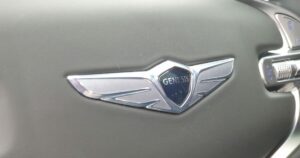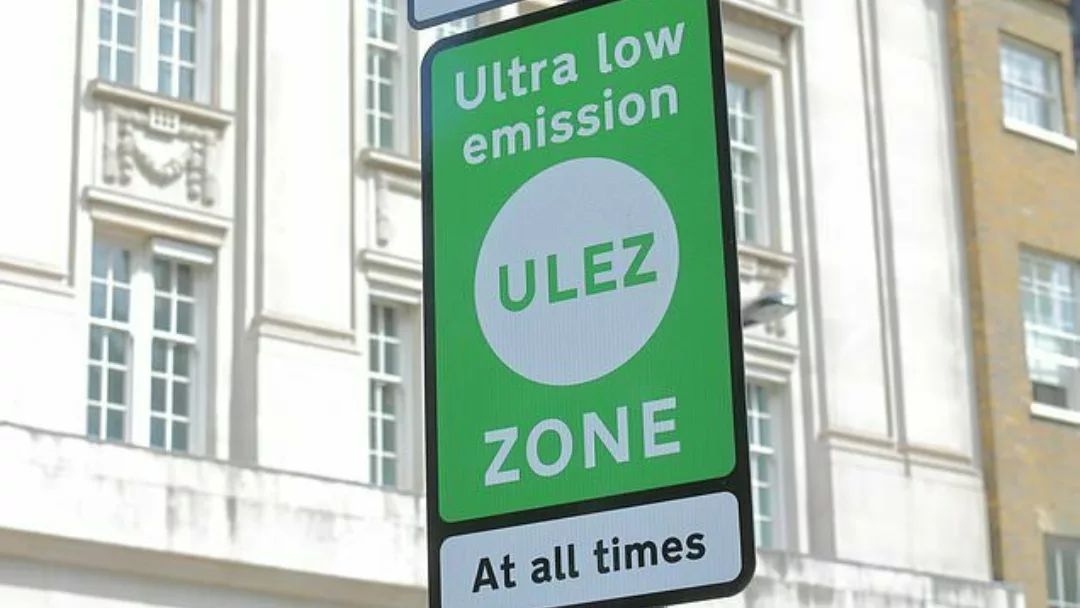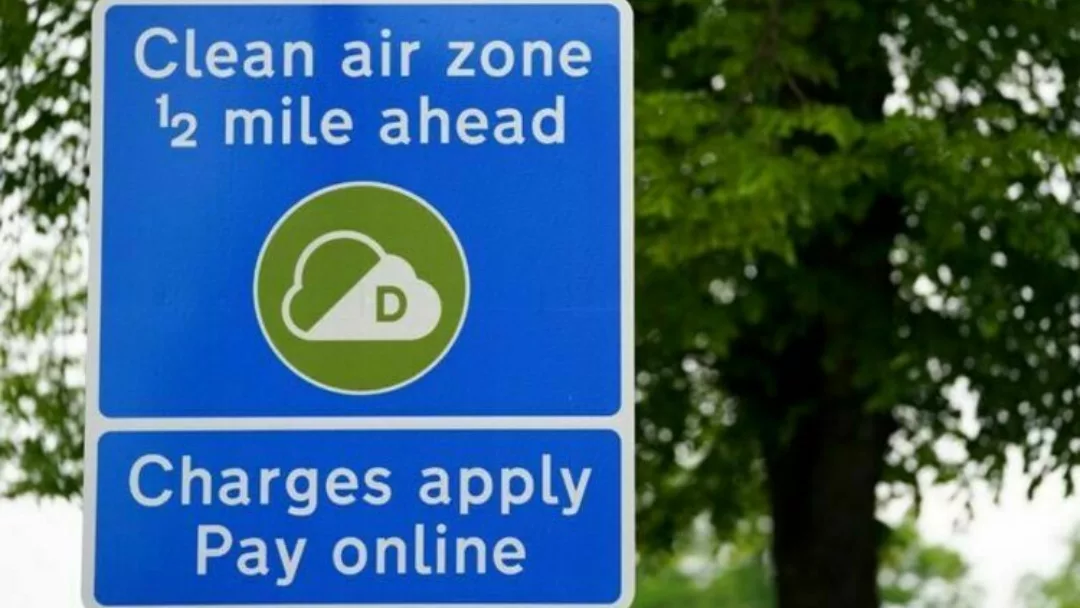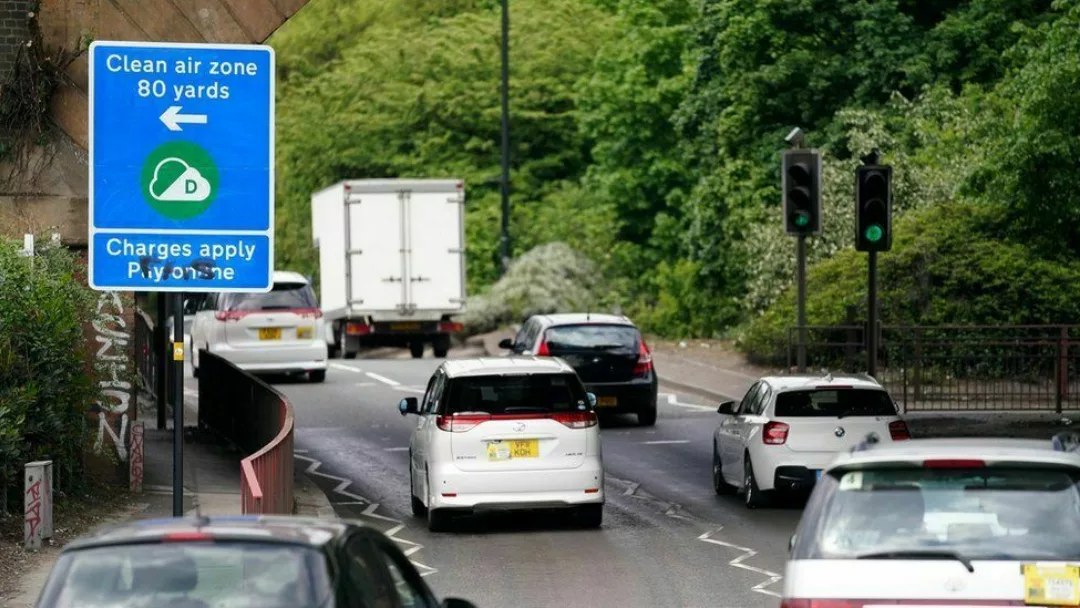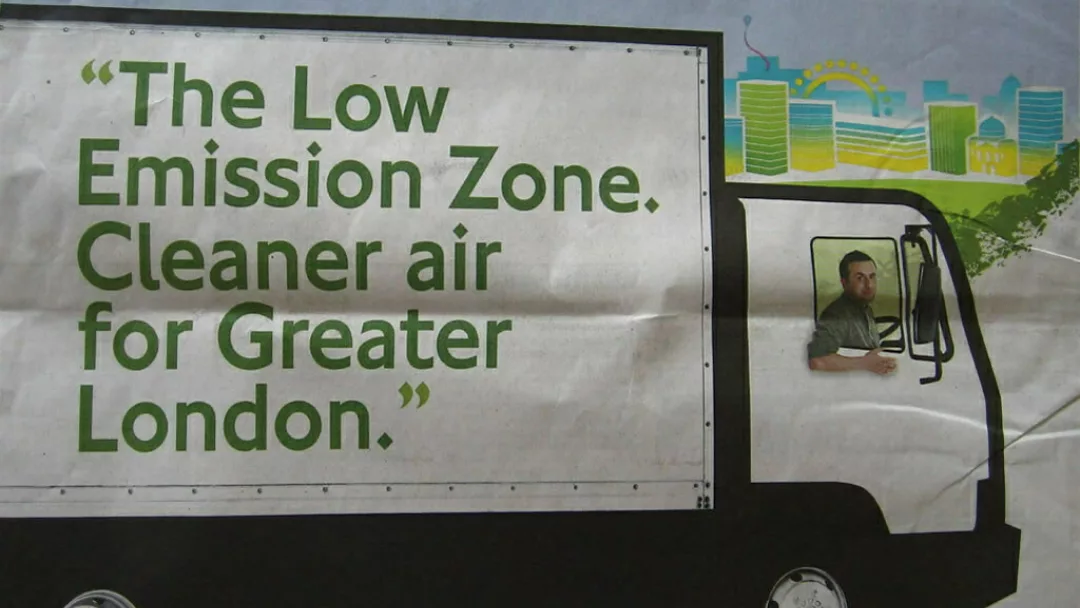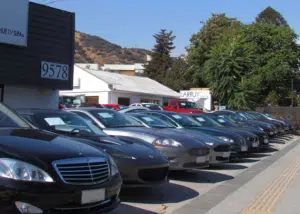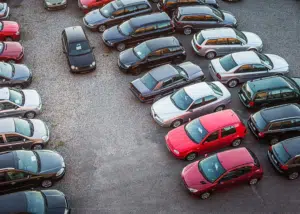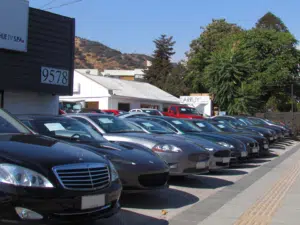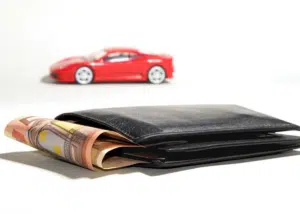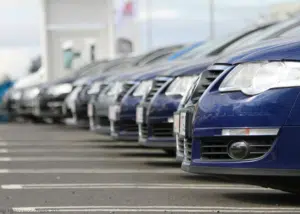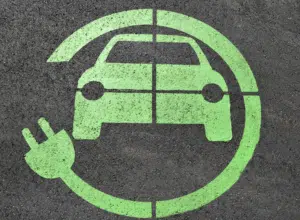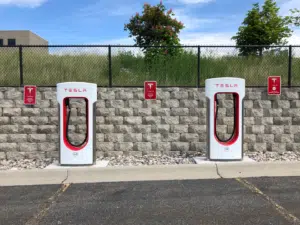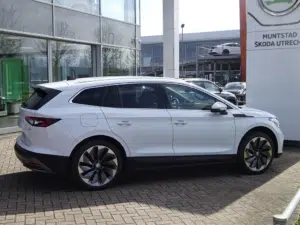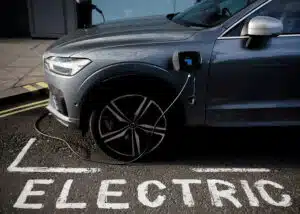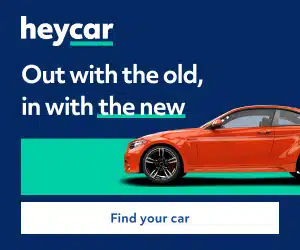We give you the information on what you can and can’t drive, how much it costs and the penalty fines handed down if you get it wrong in each UK major city.
To improve the air quality, almost all local authorities have introduced clean air zones. If your vehicle exceeds emission standards and you’re traveling to any of these clean air zones below, prepare yourself to pay a penalty charge.
Poor air quality is the largest environmental risk to public health in the UK, so the fact that councils are investing in cleaner air shows that they are committed to tackling to air pollution.
The UK has high levels of air pollution, which costs the NHS and society around £20 billion a year and is linked with lung and heart disease in children and adults
The aim of the cleaner air zones is to encourage drivers to use less polluting vehicles, so the Government developed four types of clean air zones, that have been split between Class A to D:
| Class | |
|---|---|
| A | Buses, coaches, taxis, private hire vehicles |
| B | Buses, coaches, taxis, private hire vehicles, heavy goods vehicles |
| C | Buses, coaches, taxis, private hire vehicles, heavy goods vehicles, vans, minibuses |
| D | Buses, coaches, taxis, private hire vehicles, heavy goods vehicles, vans, minibuses, cars, the local authority has the option to include motorcycles |
Each of these vehicle types has a minimum emission standard. So to avoid having to pay a charge in a clear air zone, your vehicle would need to meet the minimum standard.
| Clean air zone minimum standard | |
|---|---|
| Euro VI | Buses, coaches, heavy goods vehicles |
| Euro 6 (diesel) and Euro 4 (petrol) |
Vans, minibuses, taxis, private hire vehicles, cars |
| Euro 3 | Motorcycles |
As a standard, any clean air zone is expected to have signs in place along major access routes to clearly express that this is a clean air zone, as stated by the Department of Transport in the Clean Air Zone Framework.
Where are the low-emission zones in the UK?
Aberdeen
Low-emission zone in force since 30 May 2022
Vehicles affected all vehicles failing to meet minimum emissions standards
Low-emission zone charge £60
The scheme includes both heavy-duty vehicles (HGVs) and light passenger goods vehicles (cars and vans). With a grace period of 2 years, this means that between May 2022 and May 2024, if you enter the low-emission zone with a non-compliant vehicle, you won’t be fined. The zone will come into full force in June 2024, Aberdeen Council reports.
Bath
Clean air zone in operation
Vehicles affected all vehicles that don’t meet minimum emissions standards apart from private cars and motorbikes
Clean air zone charge £9 for non-compliant vans and taxis; £100 for lorries and buses
Bath operates a Class C clean air zone. The daily charge to enter the area, if your vehicle doesn’t meet the emission standards ranges from £9 for smaller vehicles to £100 for larger vehicles. You don’t want to miss a payment, because if you do you could land yourself with a £120 fine, which will rise to £180 if you fail to pay within 28 days or it will be halved if you pay within the first 14 days.
Birmingham
Clean air zone active since 1 June 2021
Vehicles affected all vehicles failing to meet minimum emissions standards
Clean air zone charge £8 for non-compliant cars; £50 for lorries and buses
Birmingham’s clean air zone covers private vehicles and non-compliant cars, which is different from the above.
The following vehicles can enter free of charge:
- diesel minimum standard Euro 6
- petrol minimum standard Euro 4
- zero emission (electric, hydrogen)
- low emission (CNG, hybrid meeting minimum standard diesel Euro 6 and petrol Euro 4)
- CVRAS (Compliant Vehicle Registered Accreditation Scheme) retrofit solution, including LPG retrofits
- moped, motorcycle
All vehicles that don’t meet the minimum emissions standards will be subject to a daily charge. At the moment this would be £8 for cars, taxis and LGVs, and £50 for coaches, buses, and HGVs. Same again, if you don’t pay. then you will be subject to a daily charge and no one wants that.,
Dundee
Low-emission zone in force since 30 May 2022
Vehicles affected all vehicles failing to meet minimum emissions standards
Low-emission zone penalty £60 to start with then doubling after each offence
It’s another Scottish city that initially intended to introduce the low-emission zone by 2020, but here we are. With a two-year grace period too, this should allow those in Dundee more time to swap their polluting vehicle to more greener friendly ones.
Penalty charges are starting off at £60, which will double for each re-offence, with a cap of £480 for cars and LGVs and £960 for buses and HGVs.
Edinburgh
Low-emission zone in force since 31 May 2022
Vehicles affected all vehicles failing to meet the minimum emissions standard
It won’t shock you to know that there will be a two-year grace period with Edinburgh’s approved low-emission zone scheme. Scotland’s capital suffers the worst pollution in the country, so this low-emission zone is perfect.
Glasgow
Low-emission zone plans for all vehicles from 1 June 2023
Vehicles affected all vehicles failing to meet minimum emission standards
Clean air zone penalty £60, doubling after each offence
Initially, Glasgow’s low-emission zone was only for local buses in the city centre back in 2018, but that is due to be extended next year to include all vehicles. Drivers caught entering the zone will be sent a penalty, with fines starting at the usual £60 and going up from there, the same as Dundee.
London
Ultra low-emission zone in force now
Vehicles affected all vehicles which don’t meet the minimum emission standards
Ultra-low emission charge £12.50 per day for affected cars; £100 for lorries
London became the first city to introduce a low-emission zone based on the national emission standards because its air quality was shocking.
London’s low emission zone covers the majority of the capital. You’ve also got the ultra-low emission zone which has stricter regulations that cover the North and South circular roads.
Any vehicles that don’t meet the ultra-low emission requirements, will be required to pay a charge of £12.50 and for heavier vehicles, you’re looking at around £100. The capital has some big plans for the future and aims to have smaller zero-emissions zones, where all vehicles will be charged unless they are plug-in hybrid or hydrogen.
Portsmouth
Clean air zone in force since November 2021
Vehicles affected non-compliant heavy goods vehicles, buses, taxis, and private hire vehicles
Clean air zone charge £10 per day for vans and taxis, £50 per day for lorries and buses
The clean air zone covers a large section of South West Portsmouth. Cars and motorbikes are currently exempt from any charges. For HGVs, buses, coaches, taxis, and vans, if they do not meet the emissions restrictions that are placed, they can expect to receive a charge. To drive in the zone for free, the above vehicles must meet either the Euro 4 or Euro 6 emission standard.
York
Clean air zone in operation
Vehicles affected buses failing to meet minimum emission requirements
Since January 2021, York has had its clean air zone in place, meaning that every bus within York’s inner ring road, needs to meet the Euro 6 emission standard. It has been reported that buses in York only account for 3% of traffic in the city but they cause 27% of pollution. With figures like this, it’s no wonder why the city’s clean air zone is only aimed at buses at the moment.
It’s likely that HGVs will be next on the list for York. The clean air zone so far is all voluntary by the York council, with nothing having been advised by the Government yet. The council is going all out and has agreed to set up a £1.64 million fund for bus operators to upgrade their vehicles to the required standard. They are also looking at reducing idle times of buses and helping taxi drivers move into greener vehicles too.
Cars exempt from the low emission zone
The good news is that there are some national and local exemptions from the clean air zone charges.
If you have any of the following below, you’ll be glad to know that you’ll be automatically exempt:
- a vehicle that’s ultra-low emission
- a disabled passenger tax class vehicle
- a disabled tax class vehicle
- a military vehicle
- a historic vehicle
- a vehicle retrofitted with technology accredited by the Clean Vehicle Retrofit Accreditation Scheme (CVRAS)
- certain types of agricultural vehicles
We can expect loads more cities in the UK to begin introducing clean air zones and plans for low emission charges. There’s no way this will be slowing down anytime soon, anti-emission laws are on the rise and we should expect to see places like Manchester, Newcastle, and Liverpool with new low-emission zones before you know it.
If you would like to do your own research before visiting any UK or EU City use the Urban Access Regualtions site it’s full of information and useful tips.
